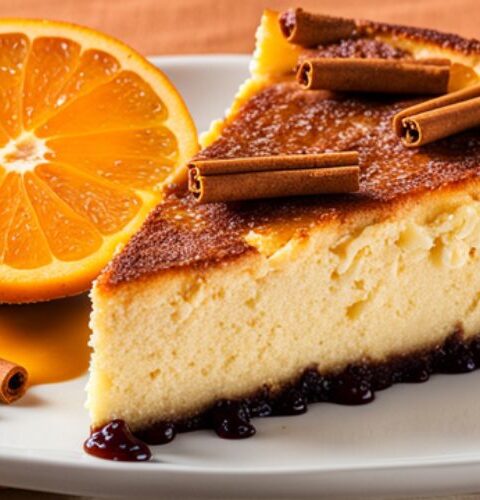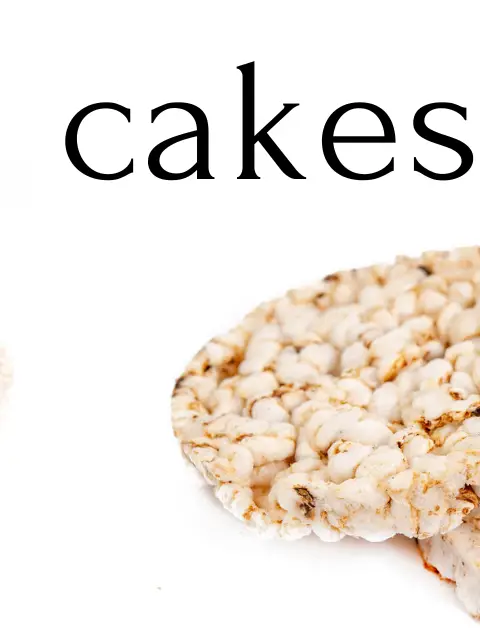Coconut cake is an undying commendable that represents the best mix of agreeableness, dampness, and tropical flavors. From its heavenly coconut-filled player to the velvety icing that crowns it, this wonderful sweet has gotten its place as a group pleaser at any social event. In this astounding blog entry, we’ll jump into the specialty of baking the ideal coconut cake, investigate its set of experiences, key fixings, and a bit-by-bit recipe that will leave your taste buds hankering more.
Coconut Cake: A Journey Through Time
Prior to embarking on the culinary experience of baking coconut cake, we should take a short excursion through its rich history. The starting points of coconut cake can be followed by tropical areas where coconut palms prosper, like Southeast Asia and the Pacific Islands. Coconut has for some time been a critical ingredient in the cooking of these districts, commended for its flexibility and unmistakable flavor.As shipping lanes extended, coconuts entered kitchens all over the planet.The arrival of coconut cake as we know it today can be attributed to European and American fascinations with exotic flavors.


Coconut cake
Ingredients
- 1 cup all-purpose flour
- 1 teaspoon baking powder
- ½ teaspoon baking soda
- ¼ teaspoon salt
- ½ cup unsalted butter, softened
- 1 cup granulated sugar
- 2 large eggs
- 1 teaspoon vanilla extract
- ½ cup coconut milk
- ½ cup shredded coconut sweetened or unsweetened
Frosting:
- 8 ounces cream cheese, softened
- ½ cup unsalted butter, softened
- 2 cups of powdered sugar
- 1 teaspoon vanilla extract
- Extra coconut flakes for garnish (optional)
Instructions
- Set the oven to 175°C/350°F. For small batches of cakes, grease and flour a small cake pan.
- Whisk the flour, baking pop, baking powder, and salt in a bowl
- Mix the butter and sugar together in a large, separate bowl until they're light and creamy in texture.
- Beat well after every addition of eggs. Add eggs one at a time. Add the vanilla extract and stir.
- In alternate batches with the coconut milk, gradually add the dry components to the wet ingredients. Blend until almost mixed.Stir in the coconut shreds
- Smooth the top of the batter after pouring it into the prepared cake pan.If a toothpick is placed in the center, it should come out clean after baking for 25 to 30 minutes.
- Give the cake a few minutes to cool in the search for gold, and then transfer it to a wire rack to finish cooling.
- Cream cheese, butter, powdered sugar, and vanilla extract should all be beaten together until smooth and creamy for the frosting.
- When the cake is totally cooled, glaze it with cream cheddar frosting.Optional: Garnish with additional shredded coconut on top.Slice and present your mouthwatering little coconut cakes!
Tips
- Choose high quality ingredients, especially when it comes to coconut products. Fresh and good quality coconut milk and grated coconut will enhance the taste of your cake.
- Make sure ingredients like butter, eggs and buttermilk are at room temperature. At room temperature the ingredients mix more easily, creating a better textured batter.
- Use specific measuring cups and spoons to measure your ingredients. Baking is a science, and accurate measurements are critical to success.
- When adding dry ingredients to wet ingredients, alternate with coconut milk. This ensures even mixing without overworking the batter.
- When incorporating the shredded coconut into the batter, fold it gently so that the batter does not deflate. This maintains the cake’s light and airy texture.
- If using fresh coconut, shred it before incorporating it into the batter. Freshly shredded coconut has a more vibrant flavor.
- For cream cheese frosting, use good quality cream cheese and real butter for the best flavor and texture.
- Once the cake is frosted, consider decorating with additional shredded coconut, toasted coconut or edible flowers for a visually appealing presentation.
How to storage
-
Room temperature:
If your coconut cake is unfrosted or has a non-perishable frosting (like a basic glaze), it can be stored at room temperature for up to 2 days
-
Refrigeration:
If your coconut cake has a perishable frosting like cream cheese frosting, or if it has a perishable filling, it should be stored in the refrigerator. Place the cake in an airtight container or cover it with plastic wrap to prevent odor absorption.
-
Airtight container:
Regardless of whether you store the cake at room temperature or in the refrigerator, always use an airtight container to prevent it from drying out and absorbing odors from the fridge.
-
Avoid direct sunlight.
Keep stored coconut cake away from direct sunlight and heat sources to prevent any change in texture or flavor.
-
Frosting Protection:
If the cake is frosted, consider placing a sheet of parchment paper or plastic wrap directly on top of the frosting before sealing the container. This helps prevent the frosting from sticking to the cover.
-
Different levels:
If you’ve layered a coconut cake with filling or frosting, consider placing a piece of parchment paper between the layers to prevent them from sticking together.
-
Cold:
Coconut cake can also be frozen for longer storage. Wrap the cake tightly in plastic wrap and then place it in an airtight container or heavy-duty freezer bag.
-
To thaw the frozen cake:
When the frozen coconut cake is ready to be enjoyed, transfer it to the refrigerator and let it thaw overnight. Avoid thawing at room temperature, as this can cause a wet texture
-
Individual slices:
If you want to freeze individual slices, wrap each slice in plastic wrap and place in a single layer in a freezer-safe container. This allows you to thaw and enjoy the slices as needed.
-
Quality Check:
Before serving stored or frozen coconut cake, check for any signs of spoilage, such as an odor or unusual texture. If cake appears or smells, it is best to discard it
Variations and Customizations coconut cake
Tropical Fruit Inspiration:
Introduce a tropical twist by adding diced pineapple or mango between the cake layers. This enhances the overall fruit flavor and complements the coconut.
Citrus Zest Elevation:
Enhance the coconut flavor by adding citrus zest, such as lime or orange, to the batter. The zesty addition provides a refreshing contrast to the sweetness.
Almond Joy Inspired:
Mix the cake with almond extract and add chopped almonds or almond flakes. This variation mimics the taste of the classic Almond Joy candy bar.
Chocolate-Coconut Fusion:
Add cocoa powder to the batter to create a delightful chocolate-coconut mixture. Layer the cake with chocolate ganache for a rich and indulgent twist.
Rum-soaked indulgence:
Enhance the cake with a tropical flair by incorporating a splash of coconut-flavored rum into the batter. Brush layers with rum syrup for added moisture and flavor.
Coconut-cream filling:
Introduce a delicious coconut cream filling between the layers. This adds a creamy and decadent element to the cake, making every bite more luxurious.
Pina Colada Inspiration:
Infuse the cake with pina colada flavor by adding coconut cream, pineapple chunks and a hint of rum to the batter. Top it off with coconut and pineapple glaze.
Toasted Coconut Garnish:
Add visual appeal and texture by toasting shredded coconut for garnish. Sprinkle toasted coconut on top of the frosting for a nutty and fragrant touch.
Lemon-Coconut Harmony:
Combine the bright flavor of lemon with coconut by adding lemon zest to the batter. Consider adding a lemon glaze or frosting for a citrusy contrast.
Spicy Coconut Delight:
Introduce hot spices like cinnamon, nutmeg or cardamom for a spicy coconut cake. This variety adds depth and complexity to the flavor profile.
Berry and Coconut Fusion:
Layer the cake with fresh berries such as raspberries or blueberries. The berries complement the sweetness of the coconut.
Mocha Coconut Extravaganza:
Infuse the cake with coffee flavor by adding instant coffee or espresso powder to the batter. Layer the cake with the coffee-flavored frosting and sprinkle the shredded coconut on top.
Q&A
1. What is coconut cake made of?
Coconut cake is made from common cake ingredients such as flour, sugar, butter, eggs and leavening agents. What sets it apart is the addition of coconut milk, shredded coconut, and sometimes coconut extract, providing a distinctive tropical flavor. The cake is often layered and frosted with cream cheese frosting, which enhances its richness and sweetness.
2. Why is my coconut cake dry?
Coconut cake can become dry due to several reasons:
Overbaking: Baking the cake for too long can cause dryness. Make sure you follow the recommended baking time and check for doneness using a toothpick.
Too much flour: Using too much flour can result in a dry texture. Measure ingredients precisely to avoid this problem.
Not enough moisture: Insufficient liquid ingredients, such as coconut milk or oil, can lead to dryness. Make sure you follow the recipe proportions exactly.
Overmixing: Overmixing the batter can cause gluten to develop, making the cake tough and dry. Mix until batter is no longer incorporated.
Incorrect oven temperature: Make sure your oven is properly calibrated and maintains the correct temperature. An oven that runs too hot can dry out the cake
3. What makes a cake fluffy?
The inclusion of air during the mixing process causes the cake to become fluffy, especially when creaming the butter and sugar. Leavening agents such as baking powder or baking soda produce carbon dioxide gas, which causes the cake to rise. Using the right proportions of ingredients, proper mixing techniques and the right leavening agents contribute to creating a light and fluffy texture in the cake.
4. What flavor goes with coconut?
Flavors that pair well with coconut include tropical and fruity notes like pineapple, mango, lime and passion fruit. Additionally, spices like vanilla, chocolate, almonds, and cinnamon and ginger complement the natural sweetness of coconut.
 Conclusion
Conclusion
In a splendid outing to make the ideal coconut cake, we’ve researched the pith of this tropical treat and delved into the intricacies of its creation.From understanding the authentic significance of coconut in baking to becoming amazing at choosing quality fixings, each step adds to the ensemble of flavors in this exemplary sweet.
As you leave on your coconut cake baking experience, recollect that the opportunities for customization are basically as tremendous as the coconut forests. Whether you pick a tropical natural product imbuement, a chocolate-coconut combination, or a zesty coconut charm, every variety adds a novel touch to this darling sweet.
In the kitchen, precision and creativity dance together, resulting in a cake that reflects not only the palate but also your personal culinary style. Layers of moist coconut goodness with creamy frosting and creative garnishes create a masterpiece perfect for any occasion.
As you serve and savor your coconut cake creation, share the joy with loved ones and enjoy the sweet success of your baking endeavor. Be it a simple family gathering or a special celebration, coconut cakes stand as a testament to the artistry of homemade desserts. Each cut gives pleasure, and your coconut cake undertakings unfurl with each wonderful chomp. Blissful baking!





[…] Health benefits of kimchi pancakes […]